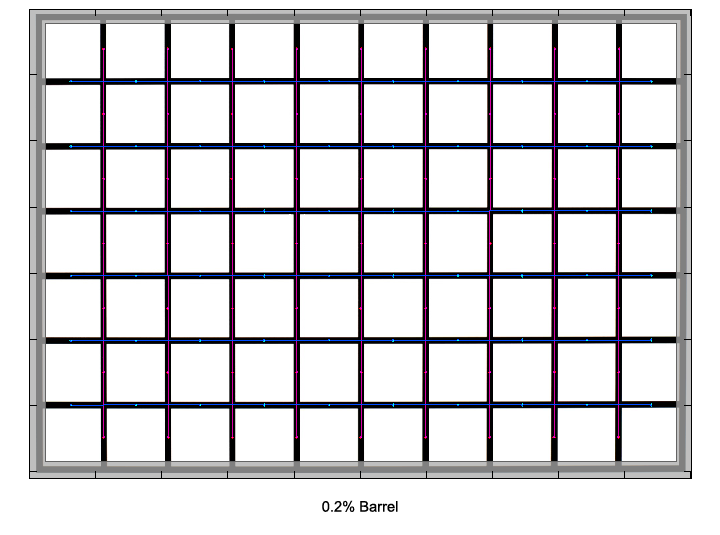|
Page 2 of 3

Distortion
Since the lens is designed for a much larger image circle than required for the small CX sensor, it's hardly surprising that the lens shows almost no distortion on Nikon 1 cameras.

The chart above has a real-world size of about 120x80cm.
Vignetting
For the same reason as mentioned in the distortion section, vignetting is no issue on CX cameras.

MTF (resolution)
Wide open, the lens show good resolution in the image center, which improves significantly by stopping down. At f/2.8, the results are already very good here, from f/4 onwards they are excellent, until diffraction takes its toll at f/11 (and beyond).
The borders and corners start out a little lower with just fair resolution wide open. However, they also benefit quite a lot from smaller apertures, reaching very good resolution at medium aperture settings (f/4 to f/8).
The lens shows some focus shift when stopping down (residual spherical aberration).
Please note that the MTF results are not directly comparable across the different systems!
Below is a simplified summary of the formal findings. The chart shows line widths
per picture height (LW/PH) which can be taken as a measure for sharpness.
If you want to know more about the MTF50 figures you may check out the corresponding
Imatest Explanations

Chromatic Aberrations (CAs)
Chromatic aberrations (color shadows at harsh contrast transitions) are around 1.3 pixels at the image borders throughout most of the tested aperture range (and just a tad lower wide open). This might be visible in very large prints (or crops). However, CAs can easily be corrected in software, in fact the Nikon 1 cameras automatically do so if you shoot JPGs.

Bokeh
One of the primary usage scenarios for a large aperture lens is to separate the main subject from the background. In such an image the quality of the bokeh (out-of-focus blur) is of major significance.
The blur potential of the lens is somewhat handicapped due to the rather small sensor of the Nikon 1 system. However, the lens still delivers quite pleasing background blur, even in the transition zone, where many lenses struggle to deliver smooth blur. Unfortunately the high density CX sensor magnifies the bokeh fringing of the lens considerably, which influences the appearance of background highlights.

Bokeh Fringing
Bokeh fringing (non-coinciding focal planes of the various colors) is a common issue with relatively fast glass. As you can notice below, the halos have different colors - magenta (red + blue) in front the focus point and green beyond. Truly "apochromatic" lenses don't show this kind of fringing but these lenses are very rare especially below 100mm. Unlike lateral lateral CAs, bokeh fringing cannot easily be fixed in post processing.
Typical for most fast primes, the AF-S 50/1.8 shows some amount of fringing at large aperture settings, which can of course be reduced by stopping down.
As already mentioned in the MTF section, these shots also illustrate that the lens suffers from focus shift when stopping down (focus shifts are not uncommon for fast prime lenses).
|